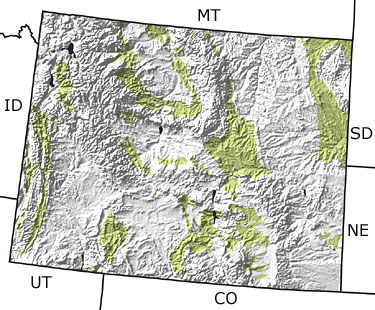Paleontology and geologyCretaceous rocks are well exposed in many parts of Wyoming, particularly around the edges of the Bighorn Basin and the Black Hills in the northern and northeastern parts of the state, respectively, as well as in the vicinity of Casper in the southeastern part of the state. During the Cretaceous, the Western Interior Seaway developed from the Gulf of Mexico to the Arctic Ocean, spreading over much of the state. Numerous episodes of transgression and regression of this seaway resulted in the deposition of thousands of feet of sedimentary rock, both marine and non-marine. A series of mountain-building episodes (the Laramide Orogeny) to the west and northwest deposited sediments in rivers and streams flowing eastward into the Seaway. These mountain-building events began in the Late Cretaceous and continued into the Tertiary, beginning the formation of the Bighorn, Powder River, and Wind River basins and adjacent mountains. Cretaceous rocks in Wyoming are noted for a wide variety of vertebrate fossils including fish, frogs, salamanders, turtles, crocodiles, pterosaurs, mammals, birds, and, of course, dinosaurs. Bones of Tyrannosaurus, Triceratops, Ankylosaurus, Troodon, Edmontosaurus, Pachycephalosaurus, Edmontonia, Dromaeosaurus, and Ornithomimus have all been recovered in the state. |

